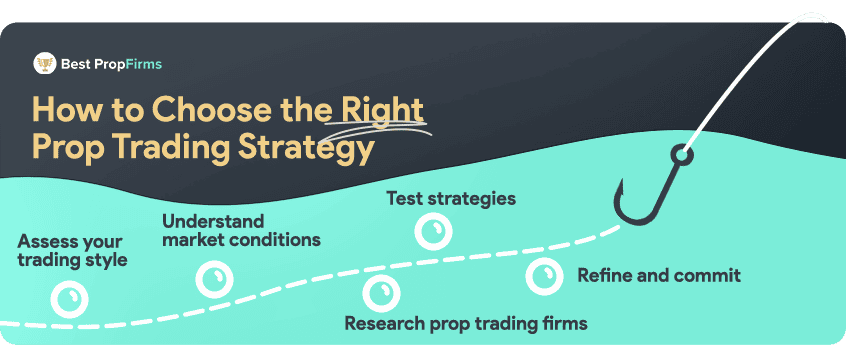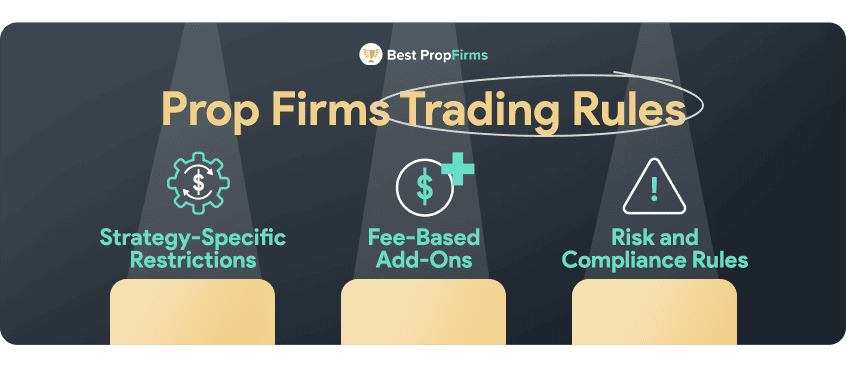Prop Trading Strategies
Prop trading strategies are critical for managing risks and maximising profits with firm capital. Choosing the right approach, such as scalping, EAs, swing trading, or high frequency trading (HFT), ensures you are following trading rules and market conditions.



 The playbook for success in proprietary trading is wide-ranging. There is no one-size-fits-all here, and depending on the prop trader’s trading style, comfort with risk, and experience, there are plenty of strategies to choose from. Let’s look at some of the popular prop trading strategies most proprietary traders rely on to succeed.
The playbook for success in proprietary trading is wide-ranging. There is no one-size-fits-all here, and depending on the prop trader’s trading style, comfort with risk, and experience, there are plenty of strategies to choose from. Let’s look at some of the popular prop trading strategies most proprietary traders rely on to succeed.

 Focuses on reading charts, looking for chart area patterns and popular technical indicators like RSI or MACD. Skilled traders in technical analysis can use these techniques to gauge short-term price movements and track market sentiments based on chart action.
Focuses on reading charts, looking for chart area patterns and popular technical indicators like RSI or MACD. Skilled traders in technical analysis can use these techniques to gauge short-term price movements and track market sentiments based on chart action. On the flip side, the fundamental analysis goes deeper into what news is moving the markets, earnings reports, and the global macro trading situation. While generally requiring more work compared to technical analysis, digging deep into corporate balance sheets, analysing central bank announcements, and keeping updated on the global events happening around, this technique can help prop traders understand why the markets are moving the way it is, be it on an upward or downward move.
On the flip side, the fundamental analysis goes deeper into what news is moving the markets, earnings reports, and the global macro trading situation. While generally requiring more work compared to technical analysis, digging deep into corporate balance sheets, analysing central bank announcements, and keeping updated on the global events happening around, this technique can help prop traders understand why the markets are moving the way it is, be it on an upward or downward move. While racking up profits and getting a share of the winnings is the ultimate goal in proprietary trading, managing downside risks is equally important for long-term success. As they say, an effective risk management system often separates successful prop traders from those still feeling their way in the markets.
While racking up profits and getting a share of the winnings is the ultimate goal in proprietary trading, managing downside risks is equally important for long-term success. As they say, an effective risk management system often separates successful prop traders from those still feeling their way in the markets. The market setting constantly changes, especially in proprietary trading. Being in sync with the market’s move can make a huge difference in how traders perform.
The market setting constantly changes, especially in proprietary trading. Being in sync with the market’s move can make a huge difference in how traders perform.





